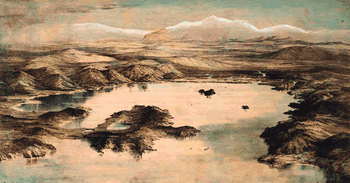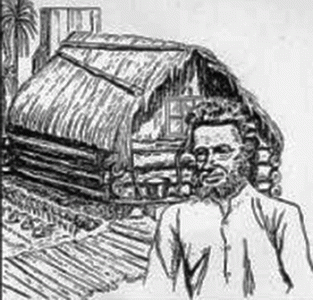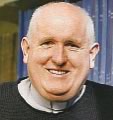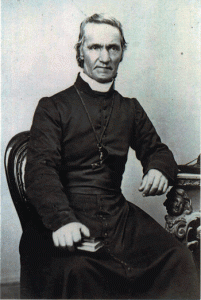Liturgy and the early Catholic missionaries to New Zealand (3)
This article was first published in the Auckland Diocese Liturgy magazine.
It is used with permission.
Books were not the only objects wanted by the Māori in connection with religion.
Fr Servant gives an account which suggests that the idea of objects with power and relics of the dead were not unknown to Māori:
Our natives are fascinated by pious objects. They like crucifixes, medals, and rosaries. They frequently press us to obtain them. One woman asked me one day for my rosary. When I refused, she retorted: you preach to me to detach my heart from the things of this world and here you are attached to your rosary? They also have all sorts of questions for us touching on the tiniest detail. Some ask if in time of war they can carry the bones of their ancestors with them, others if they can cook their food on Sunday (the heretics declare it a grave fault for them to prepare food on that day). Still others, wishing to clean up an atamira or cemetery where the bones of their ancestors are laid, invite us to go to those sites and say prayers to drive away their former gods whom they now call Satan. 1
When the first Catholic missionaries arrived in New Zealand they were few in number and the people they wished to evangelise were spread across a great geographic area. The prayer they initially introduced was not dependent on the presence of the clergy. When a priest was present he was asked to be the leader for prayer, but normally the prayers were led by lay people. They were prayed either in unison or responsorial style. There was frequent communal hymn singing. It was very much a prayer of the people and by the people.
When the Pakeha settlers arrived, they were few in number and lacking in clergy.

Port Nicholson, Lithograph by T. Allom from a drawing by Charles Heaphy
Alexander Turnbull Library, National Library of New Zealand, Ref C-029-006-b, used with permission
One creative response by Bishop Pompallier is recorded with reference to the little town that was to become Wellington:
The Irish Catholics at Port Nicholson (Wellington) are roughly 200 in number. They have a piece of land on which to build a church, a house for the priest, a school building, and to make a cemetery. During a visit from Bishop Pompallier a sizeable collection was taken up to build the church and the priest’s house but nothing yet has been done. A young man there, a zealous Catholic and doctor for the settlement, enjoying widespread trust, showed us a document which had been given him by Bishop Pompallier, of which the gist is roughly as follows: We F[rançois] Pompallier, Bishop of M[aronea], grant all the powers which can be given to a layman in spiritual matters. We authorise him to preside at Sunday prayers, to lead prayers in the presence of the sick, to bless the dead with holy water, to lead them to the cemetery while reciting the prayers prescribed by the Church. This document seemed a bit strange to us, especially to Father Grange. 2
The sources used above are all from the first eight years of the New Zealand mission. Bishop Pompallier, Fr Catherin Servant and Br Michel Colombon arrived in 1838. Thirty-seven other missionaries joined them in that first eight years. Some of this group went on to elsewhere in the Pacific or did not continue as missionaries.

Sketch of Br Michel Colombon, who died in 1880 in Reefton, where he was known as Jimmy the Gardener
Image: Champagnat Marists website
The evangelisation of the Māori was their initial focus but as time passed they became more engaged with Pakeha settlers. Fr Antoine Garin is an example of this. He worked two years in the Bay of Islands, four years immersed among the Māori at Mangakahia, and was then transferred, at the end of 1847, to be parish priest of the Fencible settlement at Howick.
Liturgy is not divorced from life, and clashes between Pakeha and Māori were to disrupt the patterns established by the early missionaries and church politics were to mean that none of them were to continue in their original mission stations after 1850.
The liturgical patterns established at the start of the evangelisation of Aotearoa-New Zealand have had an effect on Catholic life, especially Māori Catholic life, ever since.
1 Fr Catherin Servant to Fr Marcellin Champagnat, Hokianga, 29 May (?) 1841, translated by Br Edward Clisby fms
2 Fr Jean Forest to Fr Jean-Claude Colin, c. 22 May 1842, translated by Fr Brian Quin sm.


 Entries(RSS)
Entries(RSS)